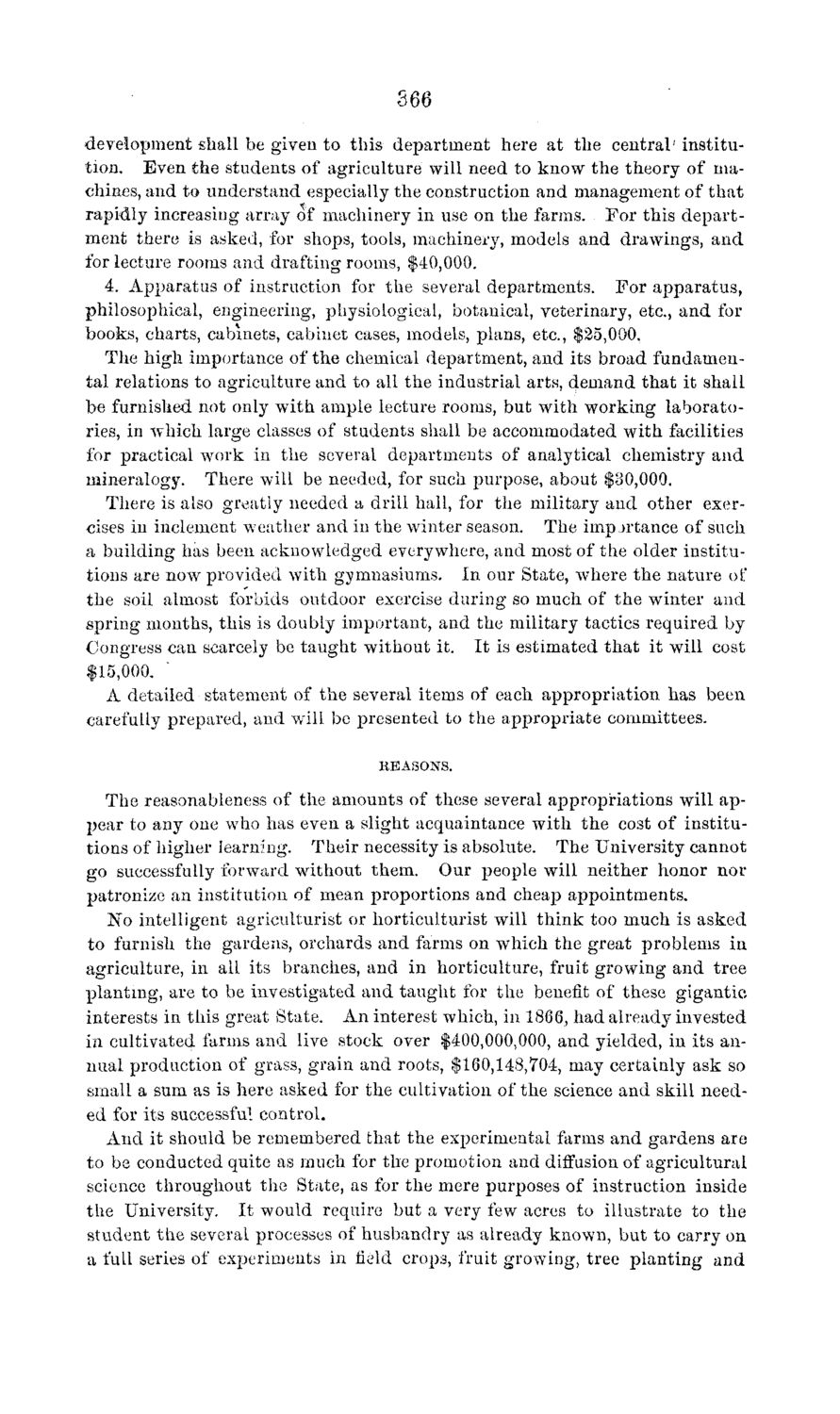| |
| |
Caption: Board of Trustees Minutes - 1869
This is a reduced-resolution page image for fast online browsing.

EXTRACTED TEXT FROM PAGE:
366 development shall be given to this department here at the central' institution. Even the students of agriculture will need to know the theory of machines, and to understand especially the construction and management of t h a t rapidly increasing array of machinery in use on the farms. F o r this department there is asked, for shops, tools, machinery, models and drawings, a n d for lecture rooms and drafting rooms, $40,000. 4. Apparatus of instruction for the several departments. F o r apparatus, philosophical, engineering, physiological, botanical, veterinary, etc., and for books, charts, cabinets, cabinet cases, models, plans, etc., $25,000. The high importance of the chemical department, and its broad fundamental relations to agriculture and to all the industrial arts, demand that it shall be furnished not only with ample lecture rooms, but with working laboratories, in which large classes of students shall be accommodated with facilities for practical work in the several departments of analytical chemistry and mineralogy. There will be needed, for such purpose, about $30,000. There is also greatly needed a drill hall, for the military and other exercises in inclement weather and in the winter season. The imp jrtance of such a building has been acknowledged everywhere, and most of the older institutions are now provided with gymnasiums. In our State, where t h e nature of the soil almost forbids outdoor exercise during so much of the winter and spring months, this is doubly important, and the military tactics required by Congress can scarcely be taught without it. It is estimated t h a t it will cost $15,000. A detailed statement of the several items of each appropriation has been carefully prepared, and will be presented to the appropriate committees. REASONS. The reasonableness of the amounts of these several appropriations will appear to any one who has even a slight acquaintance with the cost of institutions of higher learning. Their necessity is absolute. The University cannot go successfully forward without them. Our peo2)le will neither honor nor patronize an institution of mean proportions and cheap appointments. No intelligent agriculturist or horticulturist will think too much is asked to furnish the gardens, orchards and farms on which the great problems in agriculture, in all its branches, and in horticulture, fruit growing and tree planting, are to be investigated and taught for the benefit of these gigantic interests in this great State. An interest which, in 1866, had already invested in cultivated farms and live stock over $400,000,000, and yielded, in its annual production of grass, grain and roots, $160,148,704, may certainly ask so small a sum as is here asked for the cultivation of the science and skill needed for its successful control. And it should be remembered that the experimental farms and gardens are to be conducted quite as much for the promotion and diffusion of agricultural science throughout the State, as for the mere purposes of instruction inside the University. I t would require but a very few acres to illustrate to the student the several processes of husbandry as already known, but to carry on a full series of experiments in field crops, fruit growing, tree planting and
| |